All of the new BETTER participants share a common goal – to reach their potential as beef farmers. However, each and every one of our new farmers has a different journey ahead of them. Some are much further along the road than others in terms of meeting their targets.
Glen McDermott is lucky in the sense that, for the purpose of the BETTER farm programme, he has a lot of the ground work carried out already.

Listen to "Mid-April visit to new Sligo BETTER farmer Glen McDermott" on Spreaker.
In recent years, he and his son Dillon (16) have invested time, effort and money in the farm. From an infrastructure point of view, both grazing and animal accommodation, there is not a lot left to do. In contrast, the vast majority of our other BETTER farmers are busy fencing and installing drinkers at present, with some breaking rock, or contemplating doing so, on new buildings.
Thirty-eight divisions
The 41ha farm is split into two blocks, in close proximity to one another. There are currently 40 suckler cows on the farm, with calving evenly split between spring and autumn. Soil here is relatively free-draining for the area.
“I have made a big effort here on the grassland front in recent years. There are 38 grazing divisions on the farm at the moment and I’m actually planning a few more in the coming weeks. We have roadways in too, though they’re simply fenced channels – we haven’t put a surface on them. These are to facilitate AI-breeding when cattle are out,” Glen told me.
In creating more grazing divisions, Glen has afforded himself the opportunity to grow and utilise much more grass, as well as keeping top-quality material under his animals. However, there is still a lot of work needed before the farm can grow big volumes of grass. While 100% of soils are optimum for P and 63% for K, the farm’s soil pH is on the floor at 5.27 on average – none of the tests taken returned an optimum pH (=6.3).
“While obviously frustrating, I’m told things could be a lot worse from a soil fertility point of view. Lime is a cheap and cost-effective fertiliser. I’m not beating around the bush; so far in 2017, I’ve spread 86 tonnes of the stuff to try and sort this out. We went with 2t/acre on the grazing area around a month ago. I will spread the silage ground after it’s cut,” said Glen.
In a pool of over 13,000 samples collected by Teagasc nationwide in 2015, soil lime status (pH) was deficient in over 60% of cases. What’s worrying is that soil pH is typically cheap and easy to correct relative to poor P and K indices. In the Irish Farmers Journal’s recent €150/cow challenge, we outlined some of the standout facts on the benefits of correcting soil pH:
Every extra tonne of grass utilised on a drystock farm increases net profit by €105.5t/ha lime applied to soil with a low pH increases grass production by 1.5t DM/ha in the following two-year period, even when P and K levels are sub-optimal.When pH alone is corrected from a low baseline on any grassland, regardless of P and K status, grass production should increase by around 10% without any additional fertilisers or differing management.Application of 7.5t/ha of lime to a low-pH soil will increase the stocking carry capacity of the ground by 100% by year four in a four-year programme as well reducing the synthetic nitrogen fertiliser requirement by the equivalent of €4,900 worth of CAN.Lime can provide a 6:1 return on investment in its application where 1t of lime/ha/year is applied over a five-year period.To date, on top of his lime applications, Glen has spread 23 units (urea) of nitrogen across the farm (early-March) and is following stock with a half bag of an 18-2.5-14 mix that contains sulphur (2%). He closed his silage ground in early April and spread 2,500 gallons of slurry and three bags of 18-6-12 per acre. Given that he has an autumn-calving portion of his herd, making top-class silage is high on his agenda. He will move to take his first cut in late May, weather permitting.
“One of the first things the team and my local B & T adviser Peter Mullen looked at was silage quality for my autumn cows. They need to be able to rear a heavy calf for me and go back in-calf quickly, and for that I need high-quality feed going into them during the winter – for the sake of my wallet, preferably not barley.”
Calving 40 cows at present and selling weanlings, Glen is adamant that if he gets his grassland right he will be able to calve 60 cows and finish some, or all, of the progeny. He plans to maintain the 50:50 split. This year all of his autumn cows are in-calf to terminal Charolais sires such as Fiston, Gedeon and Cavelands Fenian. The immediate plan is to sell these calves live as weanlings during the summer to help farm cashflow. In contrast, the spring herd will receive Simmental sires like Curaheen Gunshot, Auroch Deuter and Clonagh Frosty King this year. The idea of this is to produce replacements for both the spring and autumn herds, with male calves entering a conventional under-16-month bull finishing system post-weaning. When selecting his bulls he was sure to choose dual purpose sires – he needs animals that will do well both in the cow herd and the finishing pen. On the cow end at present, Glen has been using maternal AI sires for a number of years and is confident that he will achieve a heavy weaning weight, upon which the success of an under-16-month bull system often hinges.
Adviser comment
John Greaney
Lime was highlighted as a serious issue with the pH in some paddocks as low as 4.9. In fairness to Glen he didn’t hang around and started spreading lime straight away and I’ve no doubt he’ll see the rewards later in the year and over the duration of the programme. Teagasc research has shown where soil pH was lifted from 5.5 to 6.3 grass production increased by at least an extra 1 tonne DM/ha annually.
Glen, who is ably assisted by his son Dillon, has a good foundation already in place and they’ve some really nice stock on the ground this year from using AI. The long term goal would be to go away from the weanling system but a certain number of weanlings will have to be sold in late summer/early autumn to boost cashflow. Producing top quality silage for his autumn calving cows is also a priority this year.

All of the new BETTER participants share a common goal – to reach their potential as beef farmers. However, each and every one of our new farmers has a different journey ahead of them. Some are much further along the road than others in terms of meeting their targets.
Glen McDermott is lucky in the sense that, for the purpose of the BETTER farm programme, he has a lot of the ground work carried out already.

Listen to "Mid-April visit to new Sligo BETTER farmer Glen McDermott" on Spreaker.
In recent years, he and his son Dillon (16) have invested time, effort and money in the farm. From an infrastructure point of view, both grazing and animal accommodation, there is not a lot left to do. In contrast, the vast majority of our other BETTER farmers are busy fencing and installing drinkers at present, with some breaking rock, or contemplating doing so, on new buildings.
Thirty-eight divisions
The 41ha farm is split into two blocks, in close proximity to one another. There are currently 40 suckler cows on the farm, with calving evenly split between spring and autumn. Soil here is relatively free-draining for the area.
“I have made a big effort here on the grassland front in recent years. There are 38 grazing divisions on the farm at the moment and I’m actually planning a few more in the coming weeks. We have roadways in too, though they’re simply fenced channels – we haven’t put a surface on them. These are to facilitate AI-breeding when cattle are out,” Glen told me.
In creating more grazing divisions, Glen has afforded himself the opportunity to grow and utilise much more grass, as well as keeping top-quality material under his animals. However, there is still a lot of work needed before the farm can grow big volumes of grass. While 100% of soils are optimum for P and 63% for K, the farm’s soil pH is on the floor at 5.27 on average – none of the tests taken returned an optimum pH (=6.3).
“While obviously frustrating, I’m told things could be a lot worse from a soil fertility point of view. Lime is a cheap and cost-effective fertiliser. I’m not beating around the bush; so far in 2017, I’ve spread 86 tonnes of the stuff to try and sort this out. We went with 2t/acre on the grazing area around a month ago. I will spread the silage ground after it’s cut,” said Glen.
In a pool of over 13,000 samples collected by Teagasc nationwide in 2015, soil lime status (pH) was deficient in over 60% of cases. What’s worrying is that soil pH is typically cheap and easy to correct relative to poor P and K indices. In the Irish Farmers Journal’s recent €150/cow challenge, we outlined some of the standout facts on the benefits of correcting soil pH:
Every extra tonne of grass utilised on a drystock farm increases net profit by €105.5t/ha lime applied to soil with a low pH increases grass production by 1.5t DM/ha in the following two-year period, even when P and K levels are sub-optimal.When pH alone is corrected from a low baseline on any grassland, regardless of P and K status, grass production should increase by around 10% without any additional fertilisers or differing management.Application of 7.5t/ha of lime to a low-pH soil will increase the stocking carry capacity of the ground by 100% by year four in a four-year programme as well reducing the synthetic nitrogen fertiliser requirement by the equivalent of €4,900 worth of CAN.Lime can provide a 6:1 return on investment in its application where 1t of lime/ha/year is applied over a five-year period.To date, on top of his lime applications, Glen has spread 23 units (urea) of nitrogen across the farm (early-March) and is following stock with a half bag of an 18-2.5-14 mix that contains sulphur (2%). He closed his silage ground in early April and spread 2,500 gallons of slurry and three bags of 18-6-12 per acre. Given that he has an autumn-calving portion of his herd, making top-class silage is high on his agenda. He will move to take his first cut in late May, weather permitting.
“One of the first things the team and my local B & T adviser Peter Mullen looked at was silage quality for my autumn cows. They need to be able to rear a heavy calf for me and go back in-calf quickly, and for that I need high-quality feed going into them during the winter – for the sake of my wallet, preferably not barley.”
Calving 40 cows at present and selling weanlings, Glen is adamant that if he gets his grassland right he will be able to calve 60 cows and finish some, or all, of the progeny. He plans to maintain the 50:50 split. This year all of his autumn cows are in-calf to terminal Charolais sires such as Fiston, Gedeon and Cavelands Fenian. The immediate plan is to sell these calves live as weanlings during the summer to help farm cashflow. In contrast, the spring herd will receive Simmental sires like Curaheen Gunshot, Auroch Deuter and Clonagh Frosty King this year. The idea of this is to produce replacements for both the spring and autumn herds, with male calves entering a conventional under-16-month bull finishing system post-weaning. When selecting his bulls he was sure to choose dual purpose sires – he needs animals that will do well both in the cow herd and the finishing pen. On the cow end at present, Glen has been using maternal AI sires for a number of years and is confident that he will achieve a heavy weaning weight, upon which the success of an under-16-month bull system often hinges.
Adviser comment
John Greaney
Lime was highlighted as a serious issue with the pH in some paddocks as low as 4.9. In fairness to Glen he didn’t hang around and started spreading lime straight away and I’ve no doubt he’ll see the rewards later in the year and over the duration of the programme. Teagasc research has shown where soil pH was lifted from 5.5 to 6.3 grass production increased by at least an extra 1 tonne DM/ha annually.
Glen, who is ably assisted by his son Dillon, has a good foundation already in place and they’ve some really nice stock on the ground this year from using AI. The long term goal would be to go away from the weanling system but a certain number of weanlings will have to be sold in late summer/early autumn to boost cashflow. Producing top quality silage for his autumn calving cows is also a priority this year.











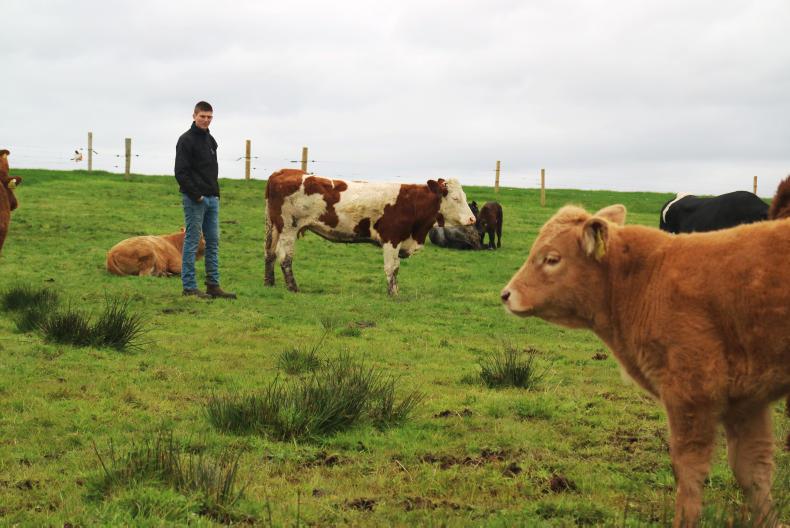
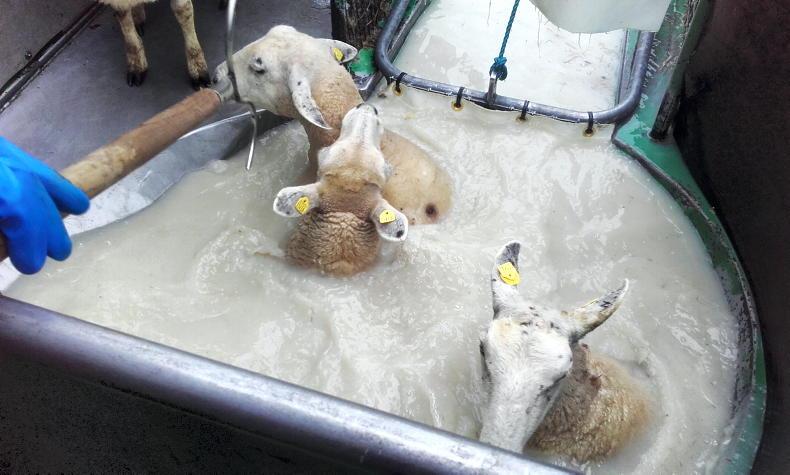

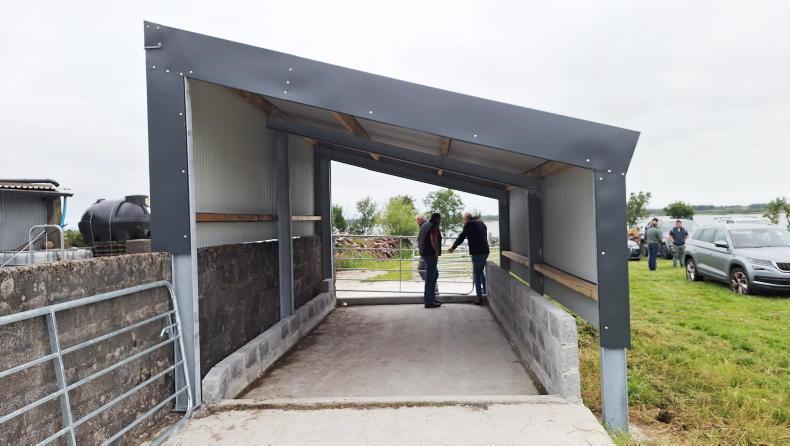
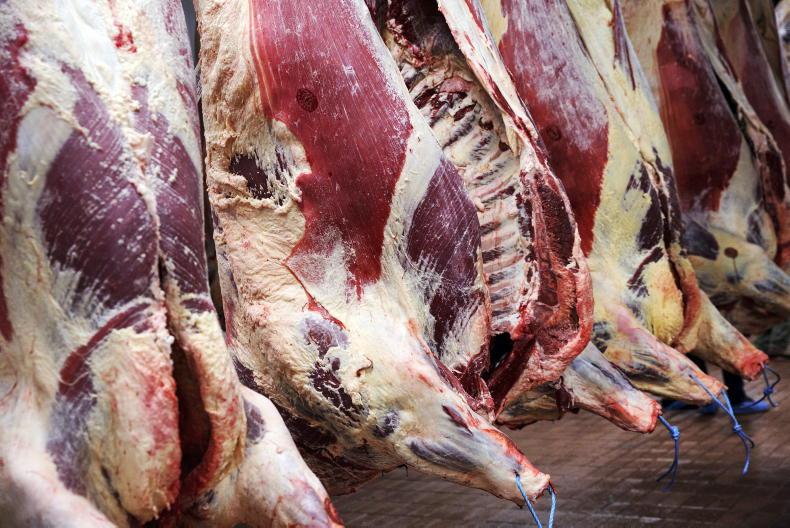
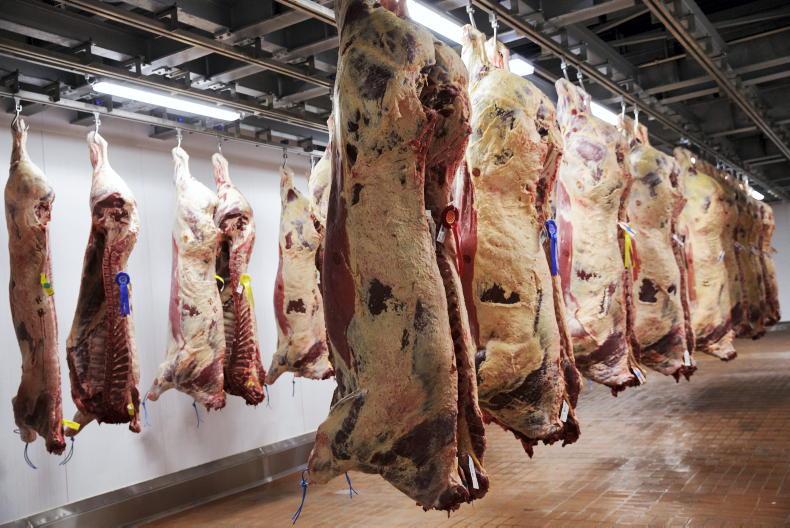
SHARING OPTIONS